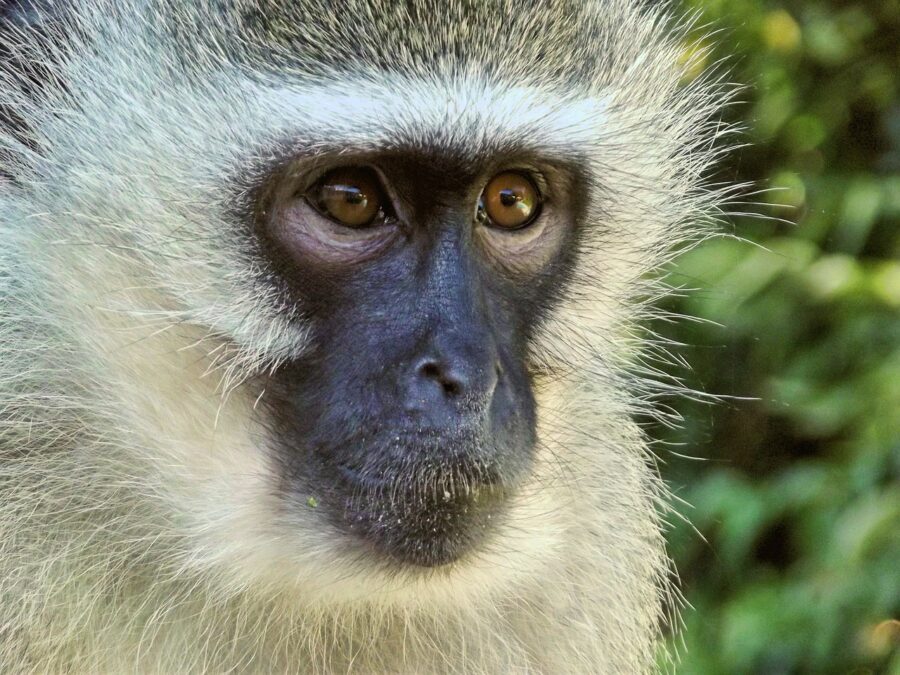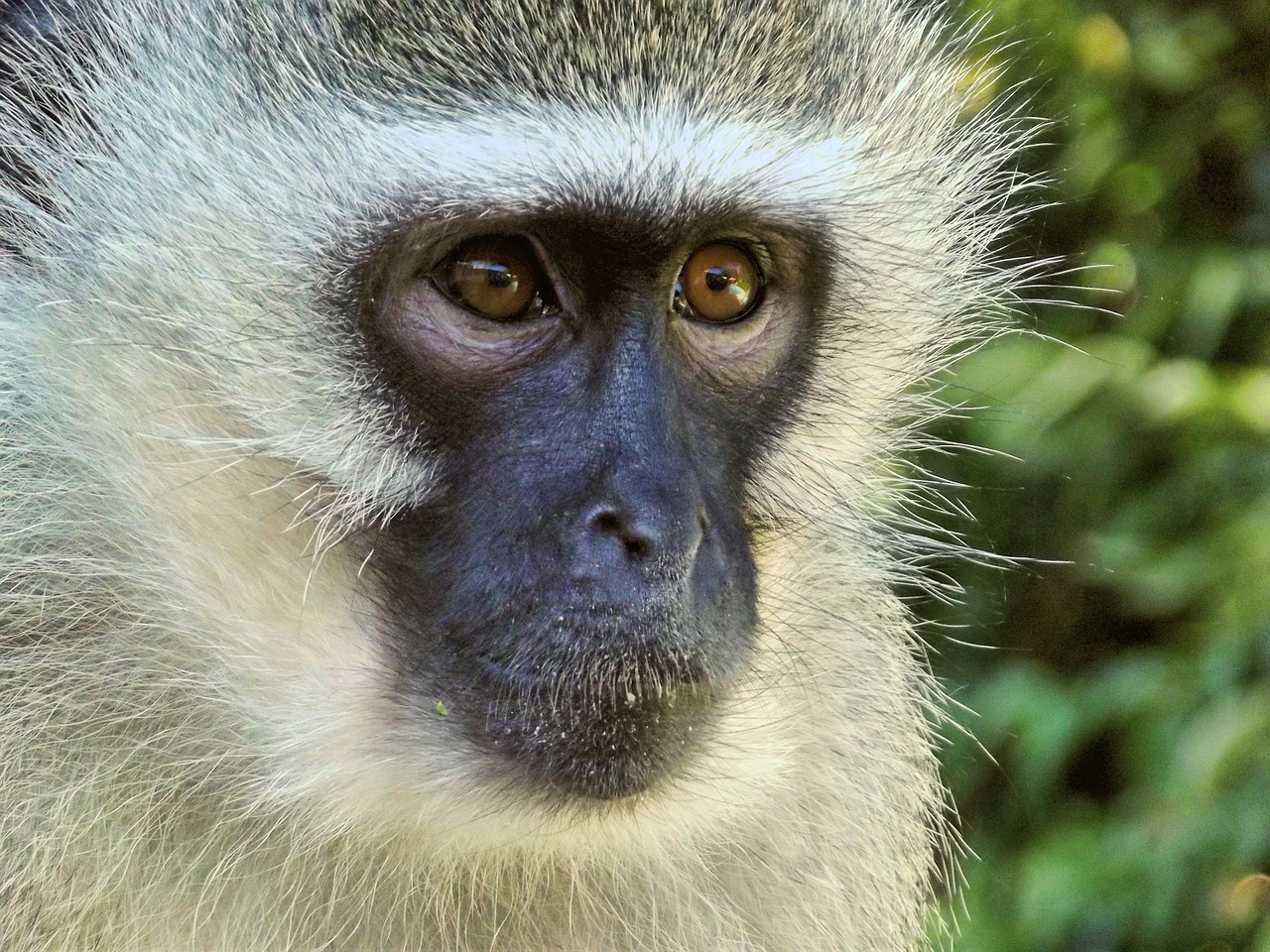
Sad Story of Amputated Monkey and Battle to Hold Vets Accountable
A vet has been found guilty of extreme cruelty to a vervet monkey and awaits sentencing in the Nigel Magistrate’s Court. It took eight years of battling by the NSPCA to get the case heard while the South African Veterinary Council did nothing and the courts kept refusing to prosecute… writes Don Pinnock for the […]

A vet has been found guilty of extreme cruelty to a vervet monkey and awaits sentencing in the Nigel Magistrate’s Court. It took eight years of battling by the NSPCA to get the case heard while the South African Veterinary Council did nothing and the courts kept refusing to prosecute… writes Don Pinnock for the Daily Maverick. (First published in DM168.)
The photograph is hard to look at. Three unhealed leg stumps and a large, inexpertly stitched slice down its abdomen. When the grey vervet monkey was confiscated by the NSPCA it was pulling itself along by its remaining arm.
The monkey was confiscated from Dunnottar vet Dr Alfreda Alberts in 2012 and taken to the Johannesburg Zoo where it was euthanised.

According to the zoo’s vet, Dr Katja Koeppel, the injuries at the amputation sites were “an open sore similar to bed sores in human beings. The wounds were oozing and painful, the stitches on the front right side had failed and there was a granulating wound that was left open and bandaged.” It is difficult to square this with an animal under the care of a qualified vet.
Alberts was found guilty on three counts: cruelty to animals in terms of the Animal Protection Act, hindering or resisting an NSPCA inspector who had a search warrant and keeping a wild animal without a permit.
On confiscating the monkey, the NSPCA informed the South African Veterinary Council (SAVC) and laid charges. The investigation was first delayed by the police, then the prosecutor at Nigel court declined to prosecute. The NSPCA appealed to the control prosecutor, who declined to prosecute.
The association then appealed to the National Prosecuting Authority, which agreed that there was merit to the charges and reinstated the case. There followed several delays because either Dr Alberts or her attorney claimed illness.
According to NSPCA investigator Jaco Pieterse, the SAVC was well aware of the case: “A complaint was lodged with their office shortly after the monkey was confiscated.” But they took no action, saying they would await the court case despite the fact that, at that stage, a lawsuit was not assured.
The case finally came to court in early 2020 after eight years of battling by the NSPCA. The court record ran to 20,600 words over 50 pages. It’s an impressive document. Sentencing was set down for 18 November.
Despite the 50 pages, however, we are left with unknowns. The court prosecutor failed to pursue the reason for the incision in the monkey’s abdomen, how three limbs could be caught in a gin trap or whether they were amputated by the vet. Also, why Alberts had not administered painkillers or why she thought an animal in that condition had a viable future. The SAVC is only now looking into the matter.
According to Tony Gerrans, executive director of Humane Society International – Africa, sentencing is irrelevant to action taken by the SAVC.
“In my view it should have acted immediately a conviction was secured. It is implausible that SAVC has still to consider whether this case warrants a formal hearing eight years after the incident.”
The president of the SA Veterinary Association, Leon de Bruyn, said: “SAVA is shocked by the allegations of animal cruelty by Dr Alberts.” The vet is not a member of the association, he said, but encouraged the SAVC to “conclude their investigation as soon as possible so justice can be served”.
As it turns out, we may never know the truth. I put it to Alberts that, as she considered she was being misunderstood and victimised, I would be happy to print her side of the story. She replied that she was prevented from discussion – particularly about the incision in the animal’s abdomen – on advice from her lawyer and any discussions with me were to be off the record.
Alberts is a puzzle… She said she would think things over but, before answering, would fast for a day, pray for three and get back to me.
Alberts is a puzzle. She seemed sincere enough but is also a master of dissimulation. Discussions over the phone were long and rambling but provided no tangible information. She said she would think things over but, before answering, would fast for a day, pray for three and get back to me. At time of writing she had not done this.
The court flatly rejected her testimony, finding her explanation to be not only improbable but, beyond reasonable doubt, false. It found that she was ‘deliberately evasive’ in court.
Pieterse confirmed that the incision in the monkey’s abdomen was there when he confiscated it and not the result of a post-mortem at the zoo. He had no idea why the abdomen had been opened. He said it was highly unlikely that three limbs could have been caught in a single gin trap.
The SAVC governs the behaviour of vets. It has a statutory duty to determine scientific and ethical standards of professional conduct and education. It’s mission includes the protection of the health and wellbeing of animals and regulates the professional conduct of the veterinary and para-veterinary professions. It’s entitled to take up cases even if they don’t lead to court appearances, so by claiming the need to await a court ruling it essentially ducked the issue for eight years. There certainly seem to be grounds for it to take action against Alberts.
Like the law, SAVC’s wheels evidently turn extremely slowly. Following the guilty verdict in March, it claimed lockdown difficulties in taking action. Also, according to SAVC advocate Dinamarie Stoltz, such investigations are protracted. The issue, she said, will now go before an investigation committee to decide whether it warrants a formal hearing. If it does, a new committee will be assembled and an independent prosecutor appointed to represent the SAVC when the ‘accused’ is called to defend herself. A key question to be considered, apparently, is whether the case is damaging to the profession.
“However, I do not anticipate the matter being closed this year. You must remember we are dealing with people’s livelihoods.”
Summing up the case, the magistrate said: “Ms Alberts ought to have been conversant with the veterinary oath which is to uphold the life of an animal. It specifically states that an animal’s wellbeing must be considered and that a vet must be the guardian to the animal that cannot express its feelings.
“Ms Alberts can in no circumstances justify her actions as having a desire to do everything possible to save the monkey. Her actions were immensely selfish, self-centred and one-sided.”
As to the motives – muti, science, curiosity, compassion? We have absolutely no clue. The court didn’t ask that question and Dr Alberts didn’t offer an explanation. That’s a question the SAVC should begin by asking – if it ever gets its hearing off the ground.
According to Dr John Austin, deputy chairperson of the SA Veterinary Association’s Animal Ethics and Welfare Committee: “The vervet monkey case and the accompanying photo are deeply disturbing to me and would be to every veterinarian I know. The eight-year delay in bringing this matter to a conclusion in a court of law reflects badly on our criminal justice system. The delay in sentencing should be irrelevant to the SAVC initiating its own enquiry into this, which carries the risk of damaging the reputation of the whole veterinary profession.” DM168
This article was republished from the Daily Maverick and Conservation Action.
